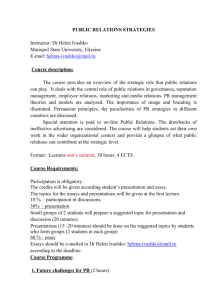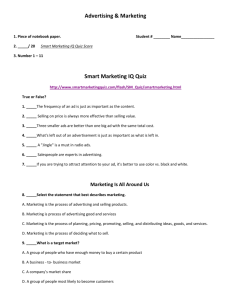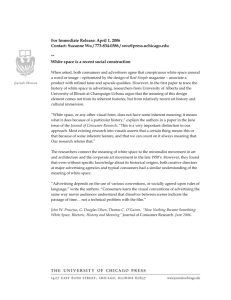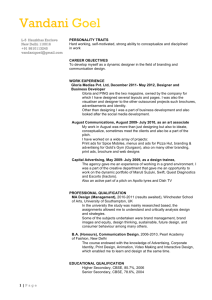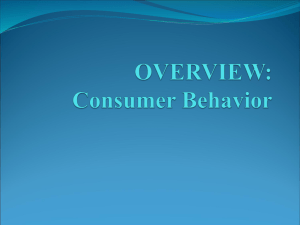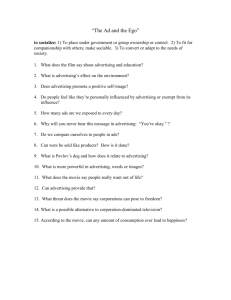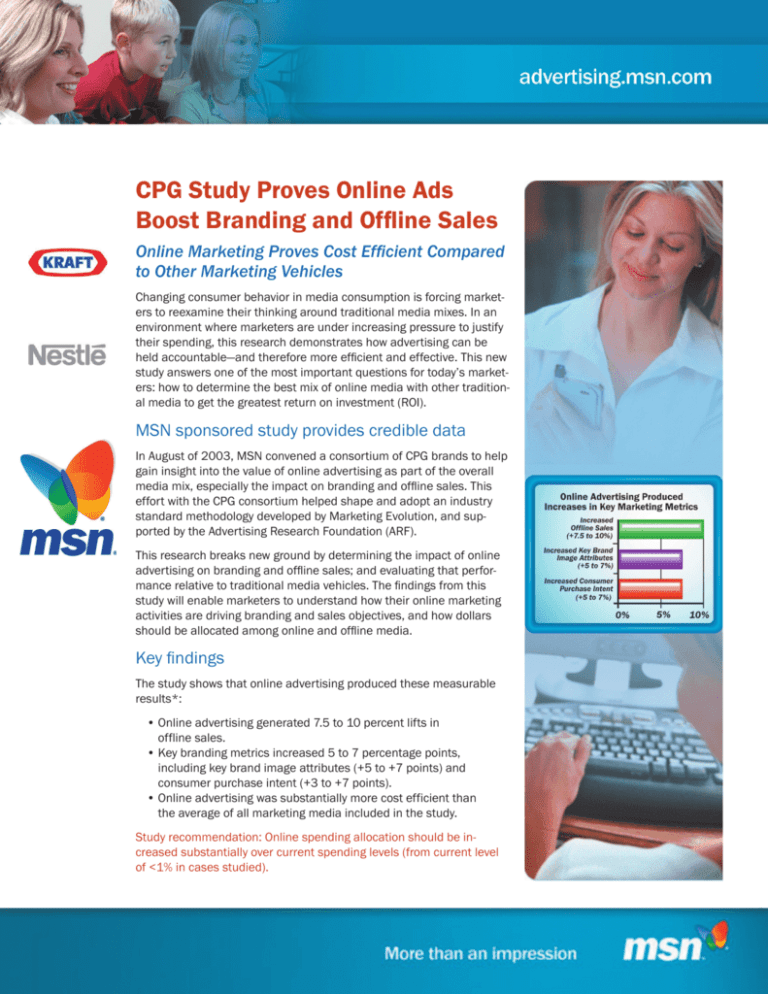
CPG Study Proves Online Ads
Boost Branding and Offline Sales
Online Marketing Proves Cost Efficient Compared
to Other Marketing Vehicles
Changing consumer behavior in media consumption is forcing marketers to reexamine their thinking around traditional media mixes. In an
environment where marketers are under increasing pressure to justify
their spending, this research demonstrates how advertising can be
held accountable—and therefore more efficient and effective. This new
study answers one of the most important questions for today’s marketers: how to determine the best mix of online media with other traditional media to get the greatest return on investment (ROI).
MSN sponsored study provides credible data
In August of 2003, MSN convened a consortium of CPG brands to help
gain insight into the value of online advertising as part of the overall
media mix, especially the impact on branding and offline sales. This
effort with the CPG consortium helped shape and adopt an industry
standard methodology developed by Marketing Evolution, and supported by the Advertising Research Foundation (ARF).
This research breaks new ground by determining the impact of online
advertising on branding and offline sales; and evaluating that performance relative to traditional media vehicles. The findings from this
study will enable marketers to understand how their online marketing
activities are driving branding and sales objectives, and how dollars
should be allocated among online and offline media.
Key findings
The study shows that online advertising produced these measurable
results*:
• Online advertising generated 7.5 to 10 percent lifts in
offline sales.
• Key branding metrics increased 5 to 7 percentage points,
including key brand image attributes (+5 to +7 points) and
consumer purchase intent (+3 to +7 points).
• Online advertising was substantially more cost efficient than
the average of all marketing media included in the study.
Study recommendation: Online spending allocation should be increased substantially over current spending levels (from current level
of <1% in cases studied).
2004 CPG study background
MSN convened a consortium of CPG companies to conduct this study
between November 2003 and January 2004. Each member submitted brands and campaigns for evaluation as part of the project. It was
the first of its kind to quantify advertising effectiveness across multiple
media, including television, magazine, radio and online. The resulting
industry research standards are supported by the Advertising Research
Foundation (ARF) and the Internet Advertising Bureau (IAB).
Innovative research methodology
Marketing Evolution developed an in-market experimental design and
tracked specific respondent-level purchase data. Study participants’
purchases were tracked by established third-party sales reporting
methods. Sales volume shifts were traced to see if online advertising
caused product purchases. These results were then compared with
traditional marketing mix models to define the optimal media mix for
each CPG brand. The study integrated two parallel studies to evaluate
the impact of all marketing elements:
• Sales Response Model analyzed the major marketing mix components, including sales volume and ROI for each marketing element.
– Multi-pooled regression model was used for side-by-side
analysis of key marketing elements conducted by third party
and in-house marketing mix model specialists (promotions,
advertising, and CRM)
Online spending
allocation should
be increased
substantially over
current spending
levels.
– Online advertising was included via an in-market experimental
design with a behavioral panel (MTS or AC Nielsen) to capture
impact at the household level
• Branding Study applied XMOS (Cross Media Optimization Study)
methodology. The study included continuous tracking to capture
branding trends from offline marketing, and an experimental design to isolate online advertising’s incremental contribution.
Conclusion
The CPG Advertising Accountability study shifts the debate from “does
online advertising work” to how marketers can maximize ROI by including online marketing within the traditional media mix. These findings
will enable marketers to understand how their online marketing activities are driving branding and sales objectives, and how dollars should
be allocated among online and offline media.
*Study conducted by independent research firm Marketing Evolution (2004). Findings
are statistically significant at 95 percent confidence level.
© 2004 Microsoft Corporation. All rights reserved. Microsoft, MSN, and the MSN logo are either registered trademarks or trademarks of Microsoft Corporation in the United states and/or other countries.
The names of actual companies and products mentioned herein may be the trademarks of their respective owners.

